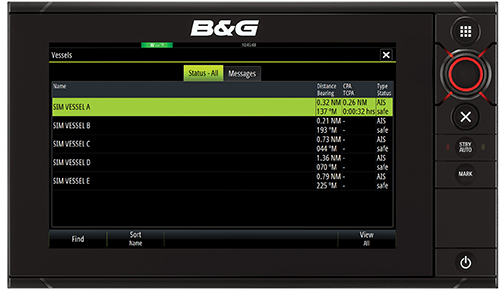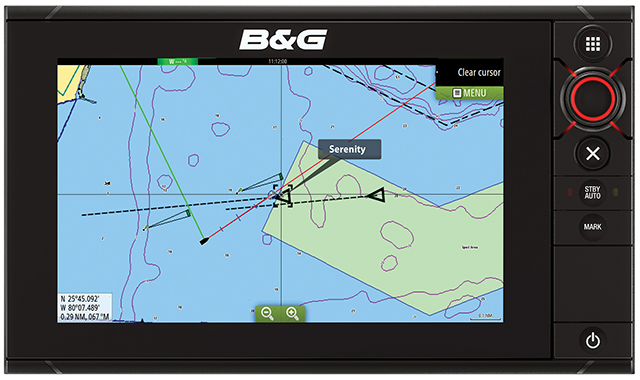(published May 2014)
The Universal Shipborne Automatic Identification System (AIS) that was put into action in 2002 by the International Maritime Organization (IMO), mandated that commercial shipping be equipped with a VHF based transponder that would automatically broadcast and receive each ship’s identity and steaming data.
The protocol to carry AIS has been embraced by ship owners around the word and by many recreational sailors and boat owners. AIS is simply the best tool for avoiding collisions at sea and is also becoming the tool of choice in crew overboard emergencies.
There are two types of AIS units available for use on sailboats, those that receive only and allow you to track shipping without broadcasting your position and data, and those that are transceivers or transponders that both receive and broadcast. For our money, installing a full functioning transponder that will tell boats and ships around you who you are and provides the essential ship’s data is the way to go.
And, there are two types of AIS transponders. Type A are commercial grade and designed for ships and vessels that sail under the regulations of the IMO’s International Convention for Safety of Life at Sea (SOLAS). Type A transponders broadcast on designated VHF frequencies at 12.5 watts, which is about half of the full power of a normal VHF radio signal. VHF is a line of sight frequency range so, depending on the height of the antenna a Type A signal will be effective for up to 20 miles or more.
Type B AIS transponders are designed for non-SOLAS designated vessels and are the units of choice for yachts and cruising boats. These units broadcast at 2 watts, which is equivalent to the low power option on a VHF radio and gives you a broadcast range, depending on the antenna’s height, of 5 miles or more.
There are quite a few brands of AIS units on the market. Some, like the Vesper units, are stand alone devices that can be integrated via NMEA 0183 and 2000 into your navigation instrument network such as those sold by Navico, Raymarine, Furuno and Garmin. The beauty of units like the Vesper is that you have operational redundancy and you have the ability to really fine tune the data you are receiving from the ships around you. For example, in crowded shipping lanes you may want to tune out ships that are steaming away from you and only collect data from ships that are approaching.
All of the big names in marine electronics offer black box AIS units that integrate into their systems. These transponders project the AIS received data onto the multifunction display or chartplotter where you can track the vessels around you or click on a ship’s symbol to read the data the ship is transmitting. In crowded waters, your screen can become quite cluttered with symbols that can in turn make it more difficult to navigate.
Standard Radio introduced a new VHF radio last year that has AIS built into it with the tracking data appearing on the small screen or on a chartplotter that it is wired into. These are a great back up to a built in system and will also find good use on smaller boats that don’t have chartplotters.

The effectiveness of your AIS signals, both in and out, depend upon the height of the antenna. For sailboats, most owners have their VHF antenna mounted at the masthead, which gives the greatest range. When you add AIS to your boat, you can use your existing VHF antenna for it as well by splicing a VHF antenna splitter into the coax that runs to the masthead. This will give your AIS signal the greatest possible range and thus improve your reaction time in a collision emergency.
The information that you receive from the AIS units on ships around you will help you maneuver safely and according to the rules of the road. The vital information you get will be the vessel’s name and type, size, position, course and speed, and its rate of turn if it is turning.
Combining this information with the same information for your own vessel, your AIS will calculate the Closest Point of Approach (CPA) and the Time to the Closest Point of Approach (TCPA). On most AIS units, you can set an alarm that will warn you audibly if you are on a close approach or collision course. When visibility is poor, such as a thick fog, this function alone is worth its weight in gold.
Last year, the manufacturers of personal locator beacons began selling wearable PLBs that broadcast on the AIS frequencies. That means that if you are in the water, your position will appear as a blip on the AIS screens on vessels near you and will make the job of finding you and hauling you back aboard much easier for the crew. Because the PLB antenna is low in the water, the effective range will be around a mile. Still, if you are the one in the water, you will be awfully glad to know that your mates can see you on their screen and can steer directly to you.
AIS started out as an international agreement to make seafaring safer and it has done that with amazing success. While private yachts and cruising boats are not required to carry AIS, it should be considered primary safety equipment and has a place on every boat that is navigating busy coastlines, crossing shipping lanes or sailing with limited visibility.















